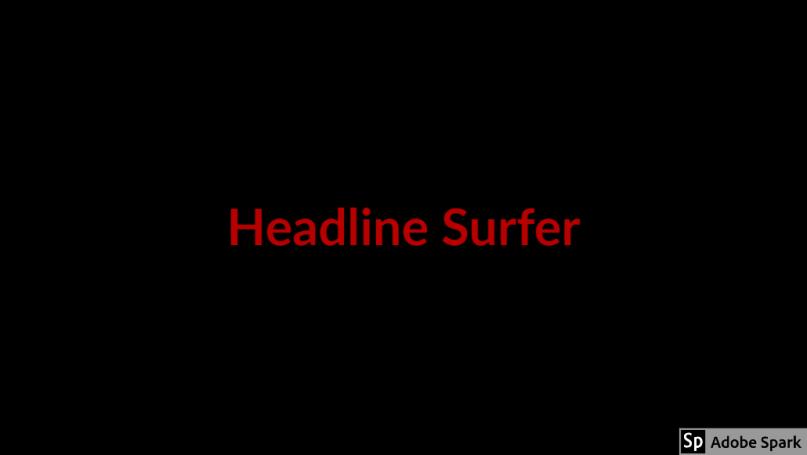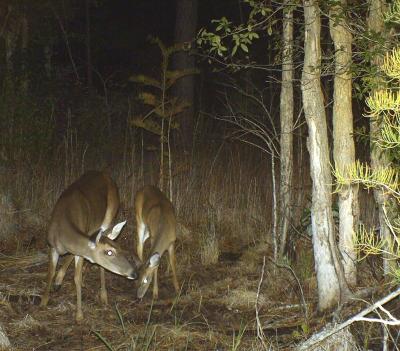

NEW SMYRNA BEACH -- General gun season is now open in the Central Zone, which is where we are located, through January. It is legal to take deer having one or more antler at least 5 inches in length visible above the hair line, wild hogs, rabbits, raccoons, opossums, coyotes, nutrias, skunks and beavers. All legal rifles, shotguns, muzzleloaders, crossbows, bows, and handguns may be used.
If using a center-fire, semi-automatic rifle, it cannot have a magazine capacity exceeding five rounds. Fully automatic or silencer equipped rifles are illegal as are non-expanding, full metal case ammunition for the taking of deer. Using rim-fire ammunition is illegal to hunt deer. Antlerless deer season started Saturday and runs through Nov. 21. Limit is two deer daily regardless of sex. Shooting hours are 30 minutes before sunrise to 30 minutes after sunset.
No Karenia brevis, the Florida red tide organism, was detected in the samples collected from Mosquito Lagoon, Indian River lagoon or from the Banana River this week. However, background concentrations of Karenia Brevis were detected this week in water samples near Port St. Joe in St. Joseph Bay (Gulf County).
Additional samples, collected offshore Destin (Okaloosa County) ansd Hernando Beach (Hernando County) contained no Karenia brevis. However, K. Brevis, was detected this week along portions of Sarasota and Collier Counties. Water samples collected near New Pass in Sarasota County and contained background concentrations of K. Brevis while samples collected at Big Marco Pass and Caxambas Pass in Collier County very low to low concentrations.
All other alongshore samples collected between Collier and Pinellas Counties did not test positive for Karenia brevis. The same results were found in additional samples from southern Lee County, Collier County and the northern part of the Florida Keys.
The weather the past two weeks has been essentially non-condusive for offshore fishing. Capt. John did get out one day and slayed the genuine Red Snapper and cobia nearly limiting out on the cobia and limiting our of the red snapper. Capt. Bruce Tippins echoed those sentiments. The King mackerel have showed up on the Party Grounds again. There were also some reports of a few dolphin and sailfish being brought to the boat at the party grounds.
In the surf, the whiting and bluefish continue to produce some great fishing. The whiting are most active in the morning and the bluefish bite all day. Black drum, pompano, Gaff-top sail cats and an occasional shark have also been reported. Sheepshead are also being caught. In Ponce, snook, black drum and a few pompano are producing most of the action. One angler described the inlet as a “hit or miss” situation.
In the Halifax River, black drum are good around the bridges but the flounder bite has cooled off considerably. Redfishing has been hot in the Tomoka area using artificial and real shrimp near the oyster bars. Small; tarpon are frequently being hooked up. Capt. John Tarr says the water in the lagoon has cleared considerably with the early morning water temperatures in the low sixties warming to the seventies during the afternoon.
The redfish are a hit or miss situation. They are cruising the sand bars and shore lines. Less than 10 percent of the baits throw are not eaten.
The final Florida Sportsman Show for 2008 took place this weekend at the Central Florida Fairgrounds in Orlando. It was moderately successful.
A Jacksonville man was arrested and a warrant issued for a second individual suspected of keeping four alligators and one crocodile in captivity at their Bayard residence. An anonymous tip led the Florida Fish and Wildlife Commission (FWC) investigators to the back yard of Robert S. Hayes, 55, and Scott Hayes, 26. When the officers arrived, they found the alligators and a crocodile in a concrete fish tank with a three foot fence around it. The elder Hayes was charged with four misdemeanor counts of possession of an American alligator and one felony account of possessing a crocodile. A warrant for the younger Hayes was issued on the same five charges.
The crocodile was identified as a New Guinea Crocodile, which is not a native species to Florida. Neither man had permits to possess the reptiles, according to the FWC. The reptiles were caught by the officers. The FWC reported the men tried to claim that they had no idea how the reptiles got there, but later they admitted that they fed them live chickens by putting corn around the pond and letting the chickens in the enclosure to eat the corn, which in turn were consumed by the reptiles.
Additional information revealed that the alligators were taken from the wild and the crocodile was stolen from the St. Augustine Alligator Farm. David Drysdale, owner of the farm said that if the animal had come from the farm the staff could identify it. Also it was learned that the crocodile had a value of $2,500. The crocodile was identified as coming from the farm and the alligators and crocodile were placed at the farm for safe keeping. The investigation of the stolen crocodile is still ongoing. Working with concerned and knowledgeable citizens frequently leads to more successful resolution of cases. Anyone with more knowledge about this case or any like it should contact the FWC at 1-888-404-FWCC. Callers can remain anonymous and still receive a reward if the information leads to an arrest.
Generally, Floridians react with great passion when we hear of threats to our natural heritage. That is a good thing when the threat is real but it can also be detrimental when misinformation guides us. The FWC is aware of an increased demand for freshwater turtles.
Obviously, increased demand will require tighter management, and recently, the commission deliberated the issue, heard public opinion, and adopted additional restrictions on turtle harvest while scientists figure out what further rules are needed. To do otherwise would be reckless.
The media once again has flooded the state with misinformation. Specifically, there is no turtle emergency and the fresh water turtle population is not plunging into extinction. In fact, 90 percent of Florida turtles that wind up on the food market or pet trade are from turtle farms – not the wild.
We read about the thousands of pounds that are being shipped out of Florida to foreign markets every week but those numbers are questionable. Those individuals, who have lined up demanding an immediate cessation of commercial turtle harvest, have criticized the FWC for not making it happen have generated passionate emotional reaction, but there is no scientific evidence that such a drastic measure is in order.
As of October 23,, an additional restriction went into effect, further restricting the harvest of wild freshwater turtles. This rule is sufficient to protect turtle populations while the FWC takes time to figure what new or additional rules are needed. There is no need to shut down the whole industry to get there. For centuries, turtle harvest required no regulation.
As conditions changed, rules became necessary. As conditions changed, revisions were made accordingly. That is the way conservation works. The situation calls for a scientific approach – not misinformed information that causes alarm.
It has been written; “Do not clean your fish before you catch them.” So whether you charter, ride a head boat, run your own vessel, stay in the river, surf fish, or fish from shore or a bridge - there are fish to be caught. Fishing is not a matter of life or death, it is so much more important than that.
Tight lines, Capt. Budd
Photo by Capt. Budd Neviaser
